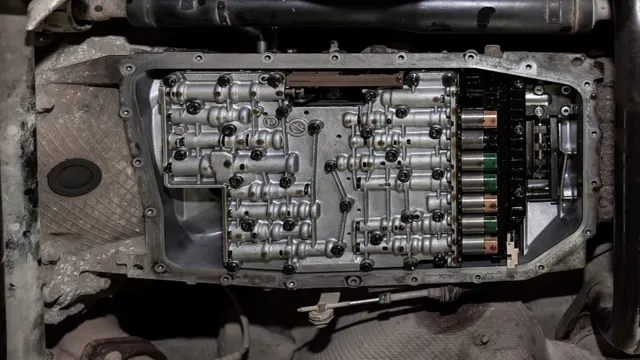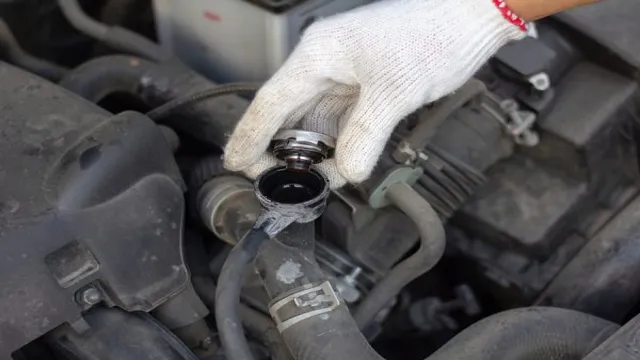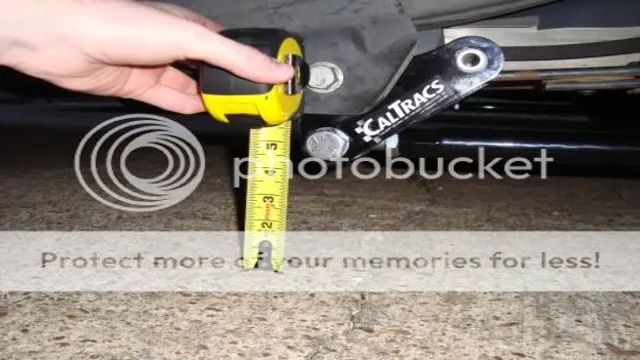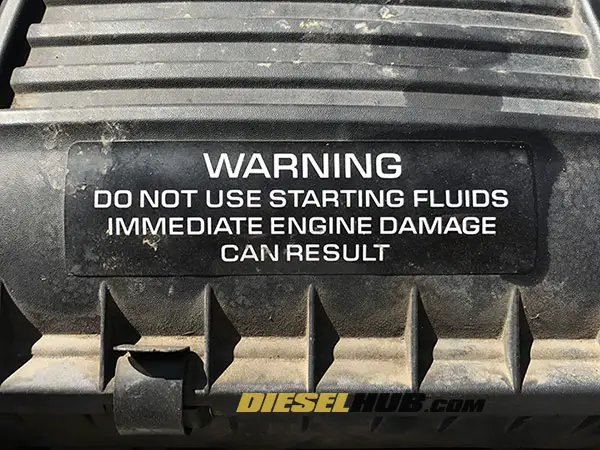Unlocking the Mystery: A Step-by-Step Guide on How to Fix Your Shift Interlock Solenoid
If you have ever found yourself in the unfortunate situation of being unable to shift your car out of park, then you may have experienced a problem with the shift interlock solenoid. This component is responsible for ensuring that the vehicle remains in park until the brake pedal is depressed, a safety feature intended to prevent unintended vehicle movement. Fortunately, fixing the shift interlock solenoid is not an insurmountable challenge.
With some basic tools and a bit of know-how, you can get your car back on the road again in no time. In this guide, we will dive into the workings of the shift interlock solenoid, the common causes of failure, and the steps you can take to fix it yourself. Whether you are a seasoned mechanic or a novice tinkerer, this guide will provide you with the knowledge and confidence you need to tackle this common issue.
So pull up a chair, grab your tools, and get ready to dive into the world of shift interlock solenoids!
Identifying the Problem
If you’re having trouble shifting your car into gear, it might be due to a faulty shift interlock solenoid. This small component is responsible for preventing you from shifting out of park without pressing the brake pedal, but when it fails, you can get stuck in park or be unable to shift at all. Thankfully, fixing the shift interlock solenoid is relatively simple.
Start by checking the brake light switch and the fuses related to the shift interlock system. If those aren’t the issue, then it’s likely that the solenoid itself needs to be replaced. You can usually find a replacement solenoid at a local auto parts store, or you can order one online.
Keep in mind that working on your car’s electrical system can be dangerous, so if you’re not confident in your abilities, it’s best to leave the repairs to a professional. In no time, you’ll be back on the road and shifting smoothly again.
Symptoms of a Faulty Solenoid
Identifying a faulty solenoid in your vehicle can be a daunting task, especially when you are not familiar with the signs and symptoms to look out for. However, knowing what to look for can help you detect and solve the problem quickly. One of the most common symptoms of a faulty solenoid is a clicking sound when starting the engine.
This sound indicates that the solenoid is struggling to engage the starter motor. Another sign to look for is when the engine fails to start even when the battery is fully charged. This could mean that the solenoid is not transmitting the necessary voltage to the starter motor.
Additionally, a malfunctioning solenoid can cause sporadic performance issues and inconsistent shifting in automatic transmissions. Therefore, if you experience any of these symptoms, it is essential to get your vehicle checked and repaired by a professional mechanic. By identifying the problem early, you can prevent further damage to your vehicle and avoid costly repairs.
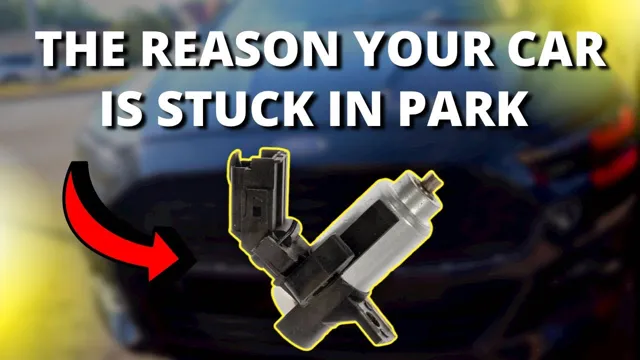
How the Solenoid Works
When attempting to fix a solenoid, it’s important to first identify the problem. Solenoids are essential components in many devices, from electric locks to vehicles. The way a solenoid works is by using electromagnetic force to move a plunger in and out of a coil of wire.
This movement can either create or break a circuit, depending on the device. If a solenoid is not functioning properly, it could be due to a number of issues such as a broken wire, corrosion, or worn-out parts. To identify the problem, it’s best to start by examining the solenoid for any visible damage or signs of wear.
Additionally, using a multimeter to test the voltage and continuity of the solenoid can help pinpoint the issue. Once the problem is identified, the solenoid can be repaired or replaced to restore functionality to the device.
Tools You Need
If you’re experiencing difficulty shifting gears or the key getting stuck in the ignition, you may have a faulty shift interlock solenoid. This small component plays a crucial role in ensuring your vehicle’s safety by preventing the car from shifting out of park until the brake pedal is engaged. Thankfully, repairing or replacing the shift interlock solenoid is a relatively straightforward process that can be done with the right tools.
You’ll need a pair of pliers, a screwdriver, and a new shift interlock solenoid. Open the center console and remove the cover to access the solenoid. Disconnect the wiring harness and remove the old solenoid with the help of your pliers and screwdriver.
Replace it with the new one and reattach the wiring harness. Once you’ve successfully replaced the shift interlock solenoid, your car should be good as new, and you’ll be able to shift gears with ease. Remember to always refer to your car’s owner’s manual for specific instructions on how to fix the shift interlock solenoid.
List of Required Tools
When it comes to DIY and home improvement projects, having the right tools is absolutely essential. Before you begin any project, it’s important to take stock of what tools you already have, and what you might need to purchase or borrow. Some essential tools include a hammer, screwdrivers (both flat-head and Phillips-head), pliers, wrench, level, measuring tape, and drill.
Depending on the project, you may also need a saw, wire cutters, or other specialized tools. Having a well-stocked toolbox can save you time and money in the long run, as you won’t have to pause your project to go out and purchase a missing tool. So, make sure you have all the necessary tools at hand before you begin your next DIY project!
Safety Precautions
When it comes to DIY projects, having the necessary tools is essential. But equally important is taking safety precautions to avoid accidents. Before beginning any project, invest in high-quality tools that are appropriate for the task at hand.
For example, a saw with a dull blade can slip and cause serious injury. Make sure to wear protective gear, such as safety goggles, gloves, and hearing protection. Additionally, ensure that your work area has proper lighting and ventilation to avoid accidents due to lack of visibility or breathing in harmful fumes.
Always unplug power tools when not in use and never leave them unsupervised, especially around children. By following these simple safety measures, you can avoid accidents and enjoy your DIY projects without worry. Remember, investing in your safety is just as important as investing in your tools.
Preparing Your Vehicle
When it comes to preparing your vehicle for an exciting outdoor adventure, having the right tools can make all the difference. A few essential tools to keep on hand include a tire pressure gauge, jumper cables, a portable air compressor, and a basic set of hand tools. The tire pressure gauge will help you ensure that your tires are properly inflated for optimal handling and fuel efficiency on the road.
Jumper cables are an absolute must in case your battery dies while out on an excursion. A portable air compressor can help you maintain proper tire pressure while you’re on the go, while a basic set of hand tools can come in handy for simple repairs and maintenance tasks. Remember that having the right tools can help you stay safe and avoid any potential setbacks during your adventures.
So, be sure to pack these essential tools along with you before embarking on your next outdoor expedition!
Replacing the Solenoid
If you’re having trouble shifting your vehicle out of park, it may be because of a faulty shift interlock solenoid. This solenoid is responsible for allowing the shifter to move out of park when the brake pedal is depressed. If you’ve determined that the solenoid needs to be replaced, there are a few steps you can follow.
First, locate the solenoid, which is often located near the brake pedal. You’ll need to remove any surrounding components in order to access it. Once you have access to the solenoid, unplug the electrical connector and remove any bolts or screws holding it in place.
Carefully remove the old solenoid and replace it with the new one. Reconnect the electrical connector and replace any components you removed. Finally, make sure to test the shifter and brake pedal to ensure everything is working properly.
With a little bit of effort, you can easily fix a faulty shift interlock solenoid and get back to driving your vehicle safely.
Removing the Old Solenoid
Replacing the Solenoid can seem like a daunting task, but with the right tools and approach, it can be done easily. The first thing you need to do is remove the old solenoid. To do this, you will need to locate it and disconnect any wires connected to it.
Once the wires are disconnected, you can remove the bolts holding the solenoid in place. Be sure to keep track of the bolts as you will need to use them to install the new solenoid. Once the old solenoid is removed, you can install the new one.
It’s essential to ensure the new solenoid is compatible with your vehicle. Then, using the bolts you removed earlier, fix the new solenoid in place. Reconnect the wires in the same manner they were disconnected from the old solenoid.
Once everything is in place, test the solenoid to ensure it’s working correctly. Remember, always consult the manufacturer’s instructions for specific details on how to replace the solenoid.
Installing the New Solenoid
Installing a new solenoid can be a bit intimidating, but with the right tools and patience, it can be done with a few simple steps. To start, disconnect the battery and locate the solenoid on the car. Remove any wires connected to the old solenoid and take note of their placement for later reference.
Next, remove the old solenoid and replace it with the new one. Secure the new solenoid in place and reconnect the wires to their proper locations. Finally, double-check that everything is properly connected and reattach the battery.
With a new solenoid, your car should be running smoothly in no time.
Testing the Replacement
So, you’ve determined that your shift interlock solenoid needs to be replaced. Now comes the testing phase. Before you go out and buy a new solenoid, you need to make sure that the old one is actually the problem.
The first thing you should do is check the electrical connections to the solenoid. Make sure everything is clean and tight, and there are no frayed wires. If everything looks good, then you can move on to testing the solenoid itself.
With the car in park, try turning the key to the on position without starting the engine. If you can’t move the shifter from park, then the solenoid is working properly. However, if the shifter moves freely, then the solenoid is likely the culprit.
With this information in hand, you can proceed with confidence knowing that you’ve properly diagnosed the issue and identified the correct replacement part.
Verifying the Solenoid’s Functionality
After installing a replacement solenoid, it is important to verify its functionality to ensure that it is performing optimally. One way to test the solenoid is to initiate a cycle and observe its behavior. The solenoid should activate and de-activate as necessary, allowing water to flow in and out of the designated area.
It is also important to confirm that the replacement solenoid is compatible with your system and correctly wired. If the solenoid is not functioning properly, it could result in costly damage to your irrigation system or other equipment. By verifying the solenoid’s functionality, you can have peace of mind knowing that your system is operating efficiently.
Conclusion: Takeaways and Next Steps
In the end, fixing a shift interlock solenoid is all about shaking things up and taking control. Just like how the solenoid is responsible for allowing your car to shift gears smoothly, you too need to make sure all the parts are in place, wired up correctly and functioning properly. So don’t be afraid to give your car a gentle jolt and get under the hood to tinker with the solenoid.
With a bit of patience and the right tools, you’ll be back on the road in no time, shifting gears like a pro.”
FAQs
What does the shift interlock solenoid do?
The shift interlock solenoid is responsible for preventing the shifter from being moved out of park mode until the brake pedal is pressed.
How do I know if my shift interlock solenoid is faulty?
If you experience difficulty moving your shifter out of park mode despite pressing the brake pedal, then it may be a sign of a faulty shift interlock solenoid.
Can I replace the shift interlock solenoid myself?
While it’s possible to replace the shift interlock solenoid yourself with the right tools and knowledge, it’s recommended to take your vehicle to a professional mechanic to ensure proper installation and avoid any potential damage.
How much does it cost to replace a shift interlock solenoid?
The cost of replacing a shift interlock solenoid can vary depending on the make and model of your vehicle, as well as the cost of labor. On average, the cost can range from $150 to $300.

